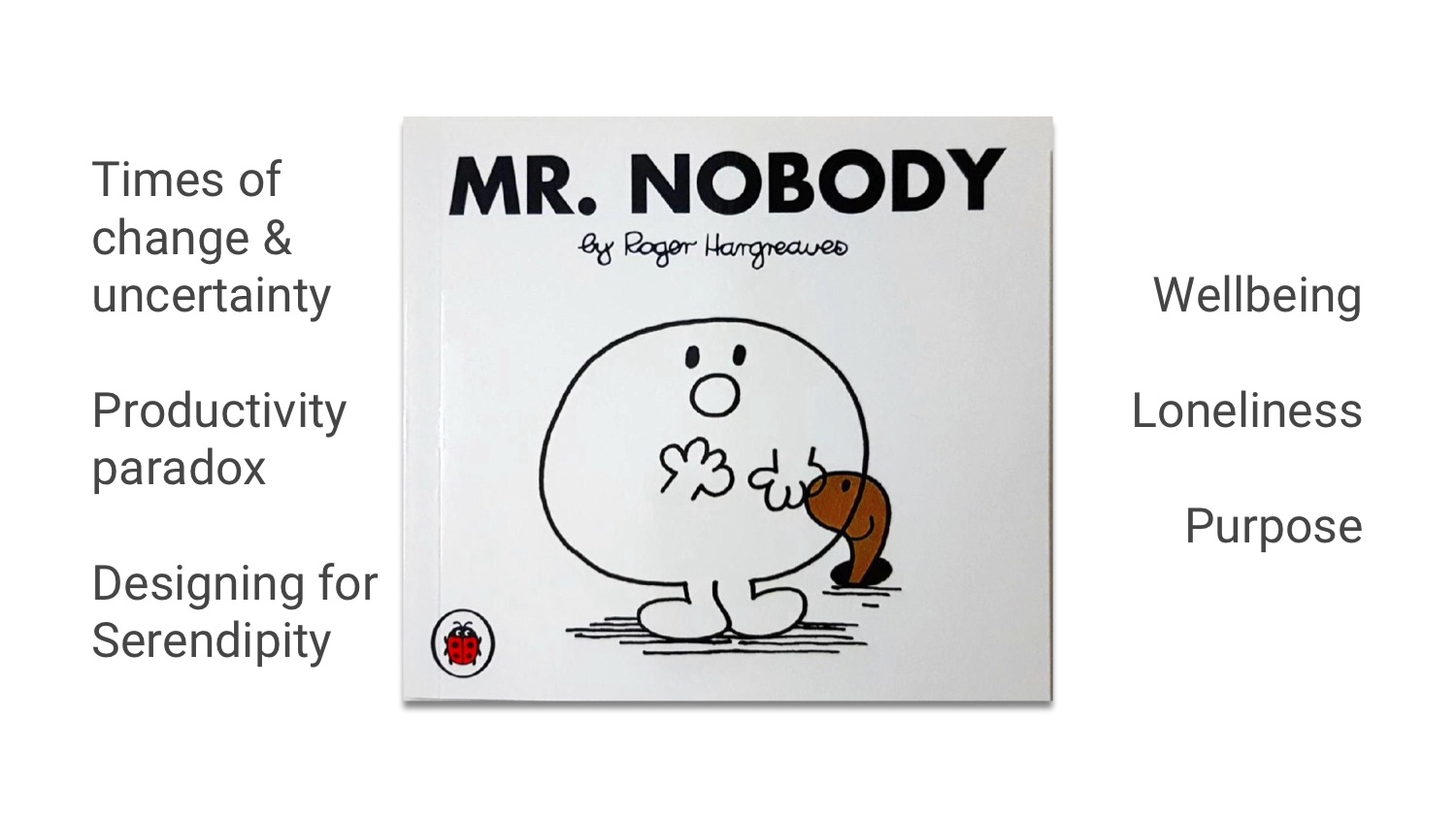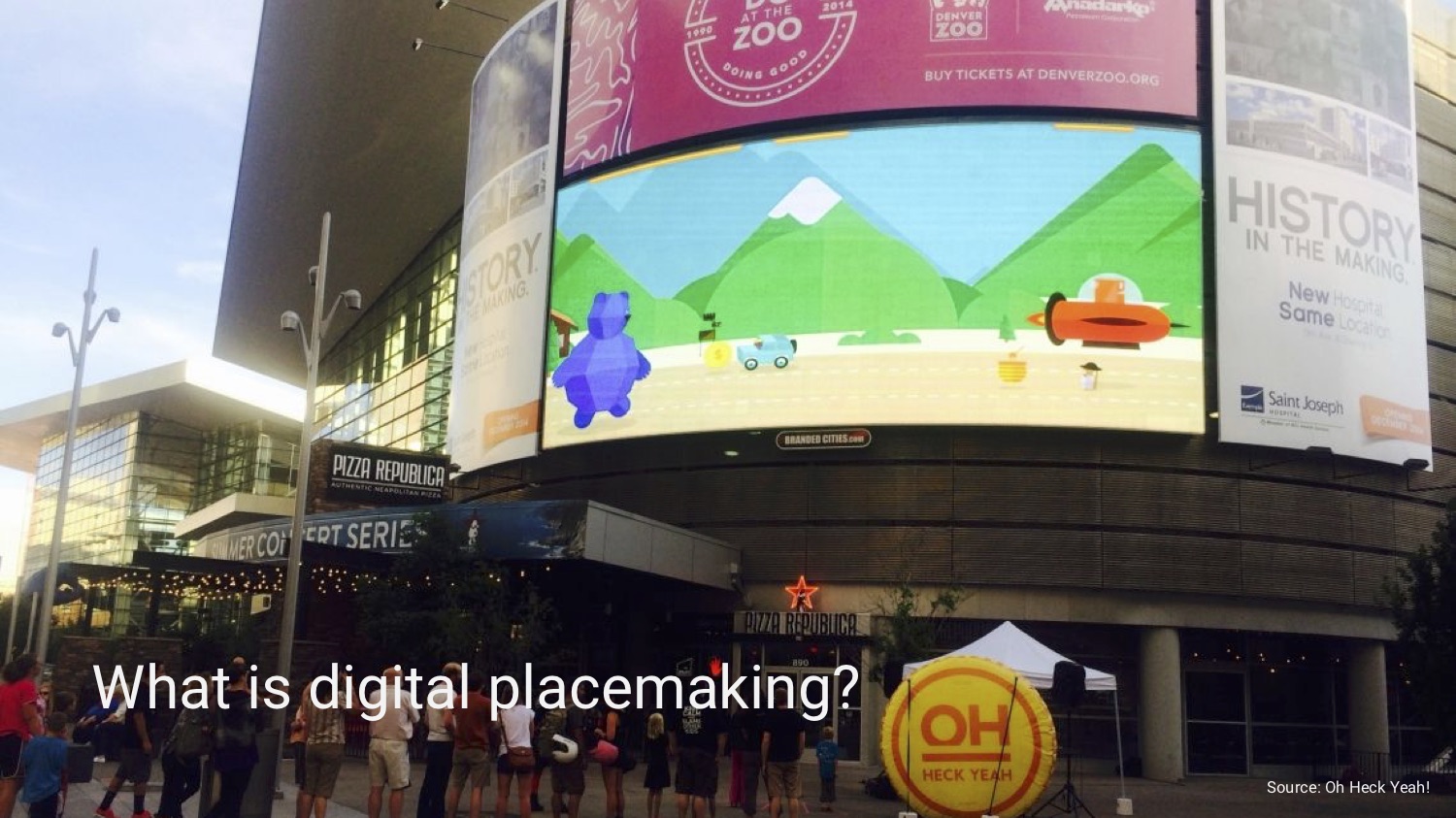Notes about digital placemaking for the workplace
2018-05-30

With so much focus on productivity or usability in most conversations about the digital workplace, this year’s SocialNow conference provided me with the chance to instead look at this concept through the workplace experience lens.
Update - You can now watch the recording of my SocialNow presentation:
(My slides from SocialNow are also available for download.)
SocialNow provides a unique platform for exploring the latest thinking and software solutions in enterprise collaboration. The event is based on a scenario created by SocialNow’s organiser, Ana Neves, about a fictitious company, Cablinc. When I looked at Cableinc, I saw an organisation where there was enormous potential to improve how people worked together; but I also saw a distributed workplace where the employees were experiencing change and uncertainty, a situation that I believed would benefit from digital placemaking.
It is necessary to look beyond productivity because employee engagement is an essential consideration for addressing overall organisational performance. For example, research by AON showed that connection with leaders and co-workers was one four key themes that are important for employees experiencing change.

But what exactly is digital placemaking for the workplace?
Digital placemaking for the workplace adds a digital layer to corporate placemaking, in a similar way that digital placemaking has applied technology to urban placemaking (in fact, corporate placemaking has its origins in urban design too).
Looking first at corporate placemaking, The Musicant Group, an interdisciplinary placemaking and public space management firm, explain:
Emerging technology and changing preferences by the next generation of workers are driving a wholesale shift in the way people work. Employees are demanding new kinds of amenities, experiences and flexibility from their workplaces. With "place" being the operative word.
The next generation of workers is demanding more than just a cubical, break room, and coffee machine from their offices. They want to work in real places that facilitate community, connection, and wellness; that give them options on when, where, and with whom they can work. The impact of shifting preferences towards more walkable, amenity rich areas with lots of "3rd places" is not just isolated to the residential market, but is impacting the future of office space too.
The key phrase above is "community, connection, and wellness" as a distinct goal, which differentiates modern workplaces as something more than mere factories of productivity.
To understand digital placemaking, we can again take our cue from the domain of urban design. Digital placemaking can be the actual medium for workplace placemaking or for orchestrating other placemaking activities, but equally, it can also support the co-design process for placemaking.

In my SocialNow presentation, I used the example of an installation created by Oh Heck Yeah, using "massive interactive video games", but this is only one aspect of digital placemaking. But unlike urban placemaking, digital placemaking for the workplace allows us to connect people wherever and whenever they are working. I would argue that the objective of digital placemaking for the workplace should be to be inclusive of all workers, not just those that share the same physical location. Which leads me to the premise of my advice for Cablinc, based on the idea of "Imagine Cablinc's digital workplace as a collection of connected neighbourhoods".
There are lots of possible activities and events that could be curated to make up a digital placemaking program.

One of my favourite examples of digital placemaking for distributed organisations was an experiment trialled by Dell and Deloitte, which centred around food (lunch or breakfast, depending on the time zone) and using video conferencing to enable participants to talk together in an unstructured way.

Deloitte concluded that it was difficult to scale their attempts at digital placemaking, but there are plenty of solutions available to help deliver corporate placemaking at scale and many other solutions that can be put in the service of digital placemaking if we use our imagination. I mentioned a few examples in my presentation, like Donut and Never Eat Alone. However, enterprise social software provides the natural foundational platforms for digital placemaking for the workplace.
Perhaps what is more important to remember is that digital placemaking should neither be left to chance or rely on cliched activities. Just as placing a ping pong table or pinball machine in the office is a lazy attempt at corporate placemaking, only switching on a tool like Yammer or Workplace by Facebook and having people share photos of babies and pets is unlikely to create a sense of place either!
To summarise, digital placemaking in the workplace is a philosophy that puts the digital workplace in service of goals such as community, connection, and wellness (rather than productivity) and is deliberate activity, underpinned by community management and curation.
Image credit: Knowman CC BY-NC-SA 2.0